Special Report
25 Poorest Countries in the World

Published:
Last Updated:

Gross national income, or GNI, represents the sum total of money earned by a nation’s people and businesses within a given year. On a per capita basis, GNI is a useful measure for assessing the wealth of a country’s population.
With a GNI per capita of $55,351, the United States is an exceptionally wealthy country. Around the world, nearly a billion people live in countries where GNI per capita is less than $5,000.
Using data from the World Bank, 24/7 Wall St. reviewed the GNI per capita of over 150 nations to identify the 25 poorest countries. GNI per capita figures are based on purchasing power parity and are in constant 2011 international dollars. We also included life expectancy at birth from the World Bank, as well as GDP from the International Monetary Fund. Population and life expectancy at birth are also from the World Bank and are for the most recent period available. GNI per capita data ranges from 2016 to 2018.
With only two exceptions, every country on this list is located in Africa, and almost all of them gained independence from European powers within the last 100 years. Perhaps counterintuitively, many of them are also rich in valuable minerals like copper, uranium, diamonds, and gold. Rather than being an economic boon, however, such resources often contribute to the lack of economic development, as economies can become overly reliant on them and fail to diversify.
In many of these countries, the struggle for control over valuable resources has led to devastating civil wars that raged on for years and made economic development all but impossible. Violence in many of these countries has made them unsafe for American travelers. Here is a list of the 26 countries that the U.S. State Department does not want you to visit.
Rampant corruption in the highest levels of government is also a common theme among the countries on this list. Abuse of power for private gain can discourage investment and hinder economic progress, and according to Transparency International, a nonprofit corruption watchdog, many of these countries are hampered by such corruption. Here is a look at the most corrupt countries in the world.
Click here to see the 25 poorest countries in the world
Click here to see the 25 richest countries in the world

25. Nepal
> GNI per capita: $2,748
> 2018 GDP: $28.8 billion (104th out of 208 countries)
> Population (2018): 28.1 million
> Life expectancy at birth in 2017: 70.2 years
Nepal is the only Asian nation to rank among the 25 poorest countries in the world. The mountainous nation’s economy of $28.8 billion is smaller than that of several countries home to many times fewer people. The country relies heavily on tourism and international aid.
In 2015, Nepal was devastated by a 7.8 magnitude earthquake that killed about 9,000 people and damaged hundreds of thousands of buildings in and around the capital city of Kathmandu.
[in-text-ad]

24. Tanzania
> GNI per capita: $2,743
> 2018 GDP: $57.4 billion (82nd out of 208 countries)
> Population (2018): 56.3 million
> Life expectancy at birth in 2017: 64.5 years
With only a couple of exceptions, every country on this list is located in Africa. Unlike many of the other countries on the continent, however, Tanzania is relatively politically stable and peaceful. Still, it remains one of the poorest countries in the world.
Poorer populations often lack access to critical health care and often report worse health outcomes as a result. In Tanzania, life expectancy at birth is just 64.5 years, about eight years below the global average.

23. Zimbabwe
> GNI per capita: $2,661
> 2018 GDP: $31.0 billion (102nd out of 208 countries)
> Population (2018): 14.4 million
> Life expectancy at birth in 2017: 60.8 years
Corruption in the public sector can discourage investment and hinder economic progress, and according to Transparency International, a nonprofit corruption watchdog, Zimbabwe is one of the most corrupt countries in the world. Zimbabwe was ruled for 37 years by Robert Mugabe, a president who, in his later years, violently suppressed political opponents and presided over the country’s economic ruin.
Poorer countries often report less healthy populations overall. In Zimbabwe, life expectancy at birth is just 60.8 years, one of the lowest of any country in the world and over 11 years below the global average.

22. Comoros
> GNI per capita: $2,515
> 2018 GDP: $1.2 billion (193rd out of 208 countries)
> Population (2018): 832,322
> Life expectancy at birth in 2017: 63.9 years
Comoros is a nation of several islands off the coast of East Africa. Economic progress has been hindered by political instability in the country. Though the country is short on natural resources, its largest exports include specialty agricultural products like vanilla and cloves.
As is often the case in poor countries, corruption is hindering development in Comoros. Government has a tight control over the media, and journalists critical of the government risk arrest.
[in-text-ad-2]

21. Guinea
> GNI per capita: $2,211
> 2018 GDP: $11.0 billion (142nd out of 208 countries)
> Population (2018): 12.4 million
> Life expectancy at birth in 2017: 60.7 years
Despite a vast wealth of mineral resources, Guinea ranks among the poorest countries in the world. With a lack of economic diversity and complexity of the kind commonly seen in wealthier nations, nearly 70% of Guinea’s exports in 2017 were mineral products like aluminium ore and petroleum gas. In recent years, Guinea’s economy has been strained by an influx of refugees from Liberia and Sierra Leone.
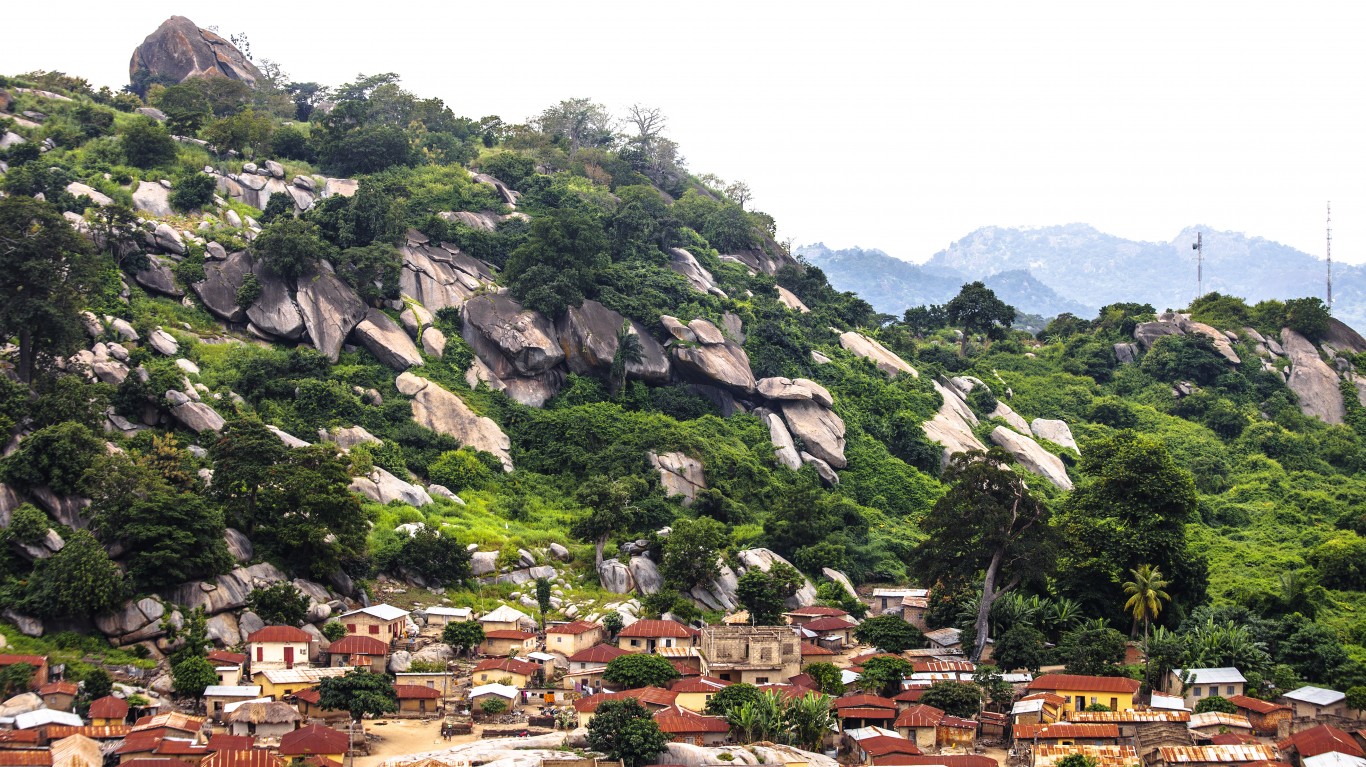
20. Benin
> GNI per capita: $2,135
> 2018 GDP: $10.4 billion (143rd out of 208 countries)
> Population (2018): 11.5 million
> Life expectancy at birth in 2017: 61.2 years
Though Benin is one of the most stable democracies in Africa, and one of the continent’s largest cotton producers, it still ranks among the poorest countries in the world. Its $10.5 billion economy is smaller than that of other countries with much smaller populations. As is often the case in countries on this list, public sector corruption has stymied economic development in Benin.
[in-text-ad]
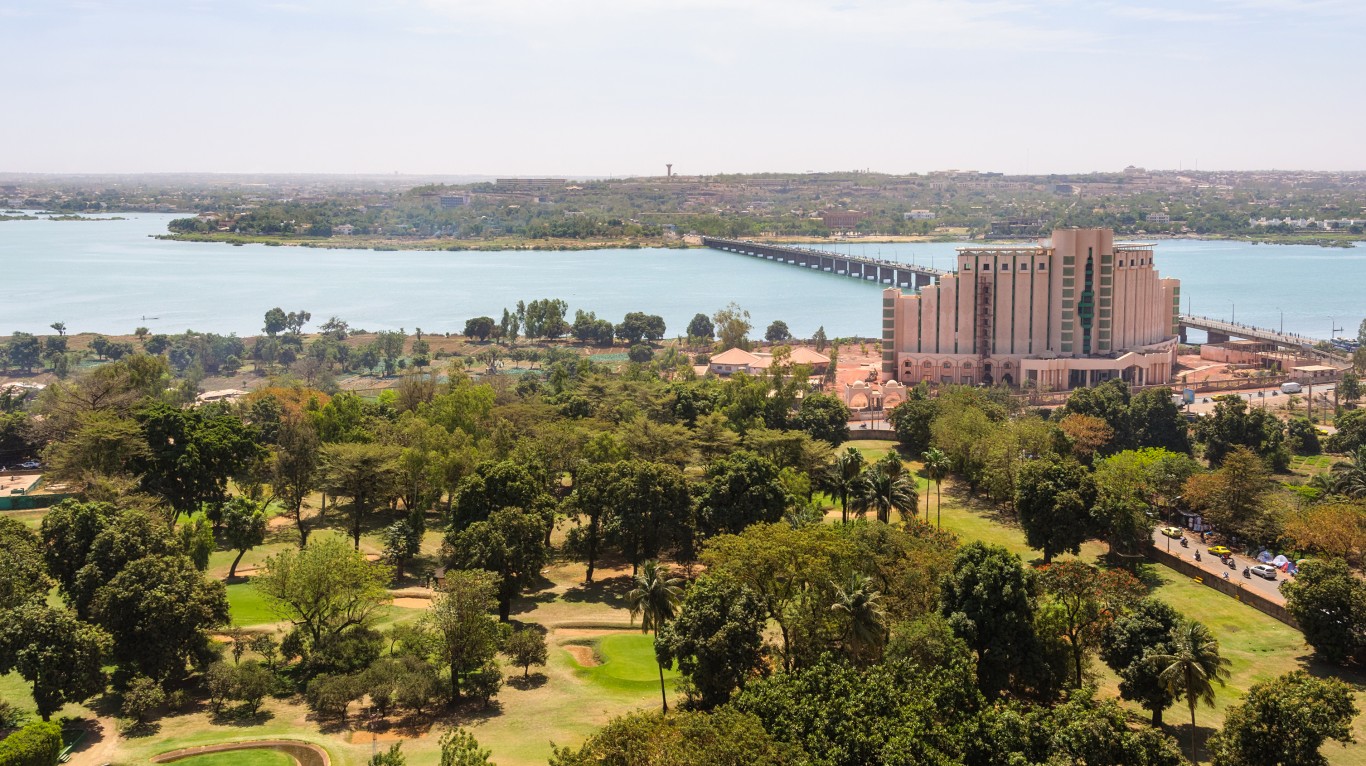
19. Mali
> GNI per capita: $1,965
> 2018 GDP: $17.2 billion (120th out of 208 countries)
> Population (2018): 19.1 million
> Life expectancy at birth in 2017: 58.5 years
The West African nation of Mali is one of only 19 countries in the world with a GNI per capita of less than $2,000. The country’s $17.2 billion economy is smaller than that of much less populous countries. The country’s economic development has been hindered by political violence and government instability.
Residents of poorer countries often have lower than average life expectancies. Mali is one of only 14 countries where life expectancy at birth is less than 60 years.
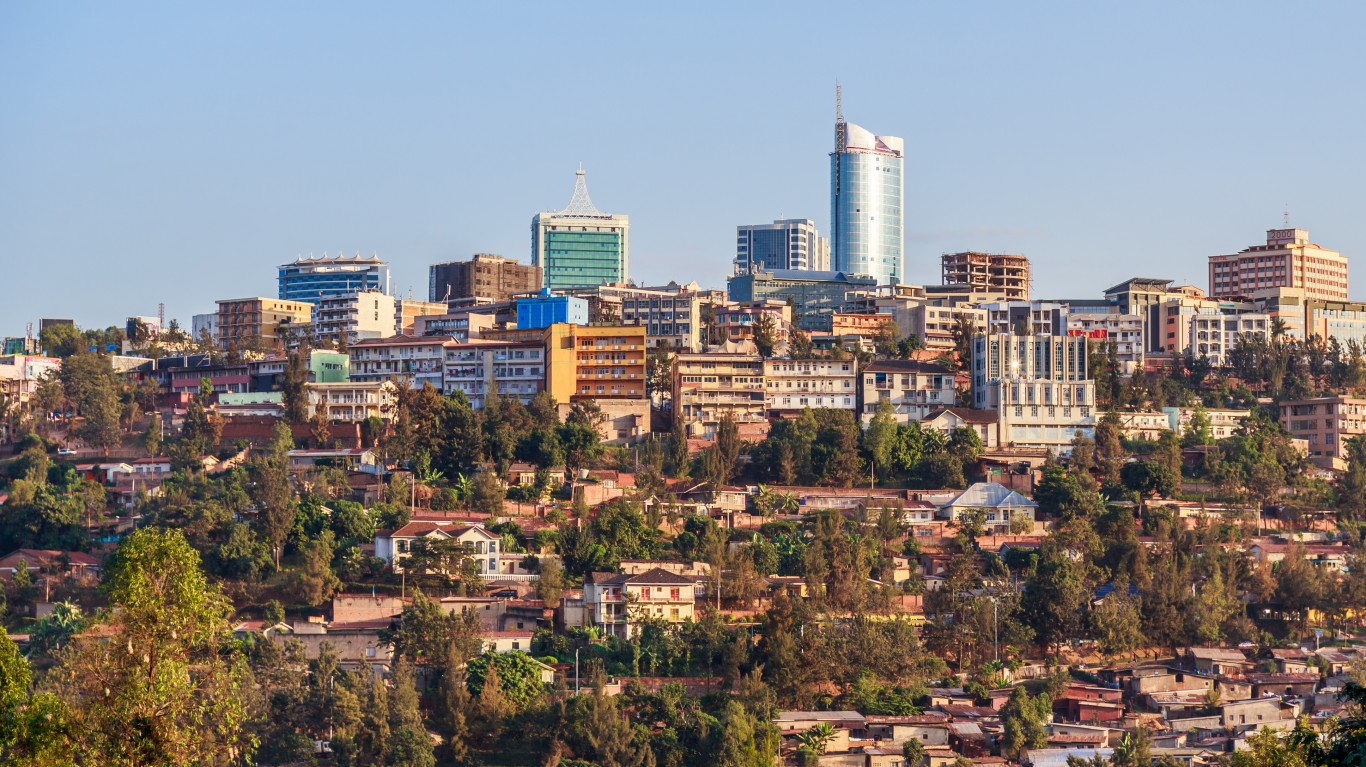
18. Rwanda
> GNI per capita: $1,959
> 2018 GDP: $9.5 billion (145th out of 208 countries)
> Population (2018): 12.3 million
> Life expectancy at birth in 2017: 68.3 years
Rwanda, a landlocked country in East Africa, borders several other countries on this list, including Tanzania, Uganda, and Democratic Republic of the Congo. The country was the site of one of the worst genocides of the 20th century, when about 800,000 ethnic Tutsis were slaughtered by the Hutu majority group in a span of less than 100 days. In recent years, the country has managed to reduce poverty through coffee and tea production. Still, with a GNI per capita of just $1,959, Rwanda remains among the poorest countries in the world.

17. Ethiopia
> GNI per capita: $1,782
> 2018 GDP: $84.4 billion (69th out of 208 countries)
> Population (2018): 109.2 million
> Life expectancy at birth in 2017: 65.9 years
Ethiopia’s $84.4 billion economy is smaller than that of many much less populous countries. Many of the world’s poorest countries are heavily dependent on agriculture, and in Ethiopia, farming accounts for over 30% of total GDP, well above the 3.4% global average. Over 60% of the country’s exports in 2017 were agricultural products like flowers and coffee.
[in-text-ad-2]

16. Uganda
> GNI per capita: $1,752
> 2018 GDP: $27.5 billion (105th out of 208 countries)
> Population (2018): 42.7 million
> Life expectancy at birth in 2017: 62.5 years
Uganda borders several other countries on this list, including South Sudan and the Democratic Republic of the Congo. As is the case in many other East African countries, Uganda has struggled with political instability and violence since gaining independence in the mid-20th century.
Corruption in the public sector can discourage investment and hinder economic progress, and according to Transparency International, a nonprofit corruption watchdog, Uganda is one of the most corrupt countries in the world.
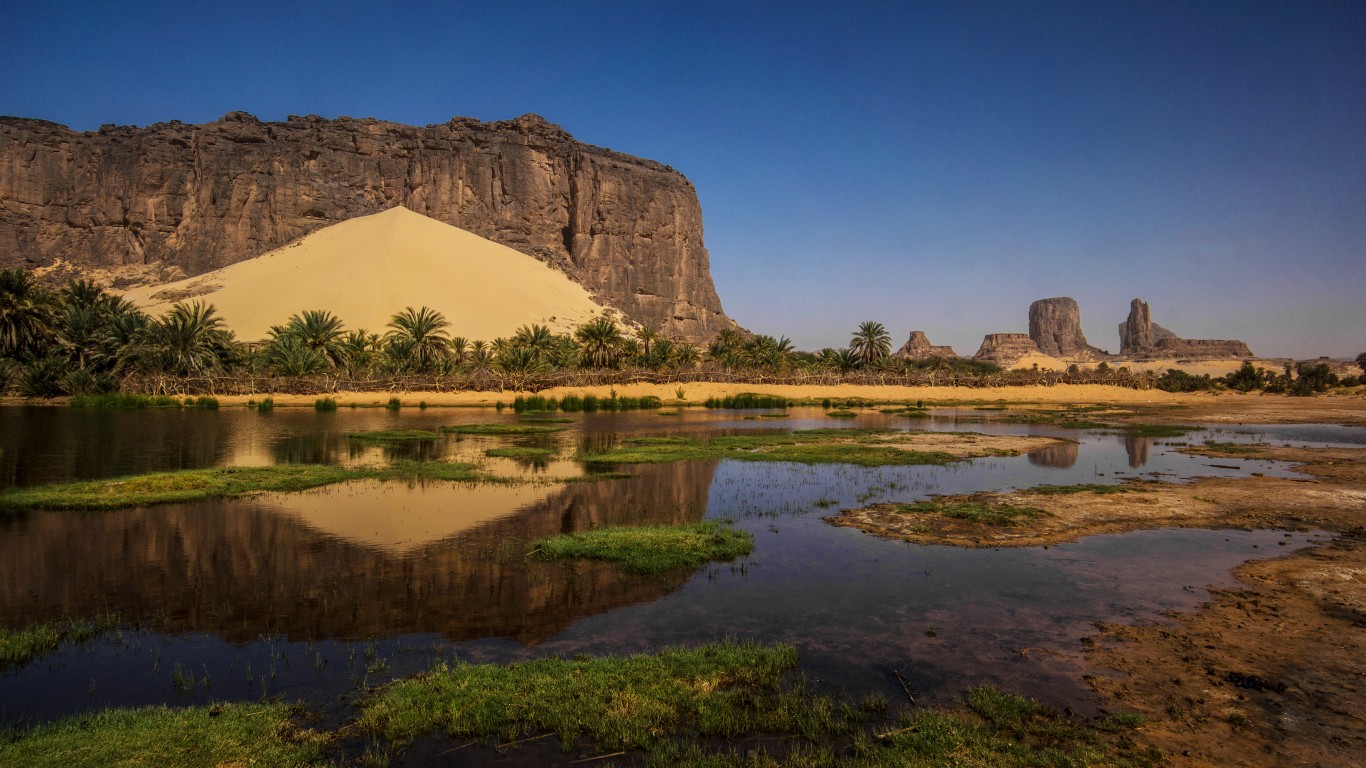
15. Chad
> GNI per capita: $1,736
> 2018 GDP: $11.3 billion (140th out of 208 countries)
> Population (2018): 15.5 million
> Life expectancy at birth in 2017: 53.7 years
Despite deposits of valuable resources like gold, uranium, and oil, Chad is one of the poorest countries in the world, with a GNI per capita of just $1,736. Economic development has been stymied since the country gained independence in 1960 partaially by inadequate infrastructure and violence between the country’s Christian and Muslim citizens.
People living in Chad have some of the lowest life expectancies in the world. Life expectancy at birth in the country is just 53.7 years, nearly 20 years below the global average.
[in-text-ad]
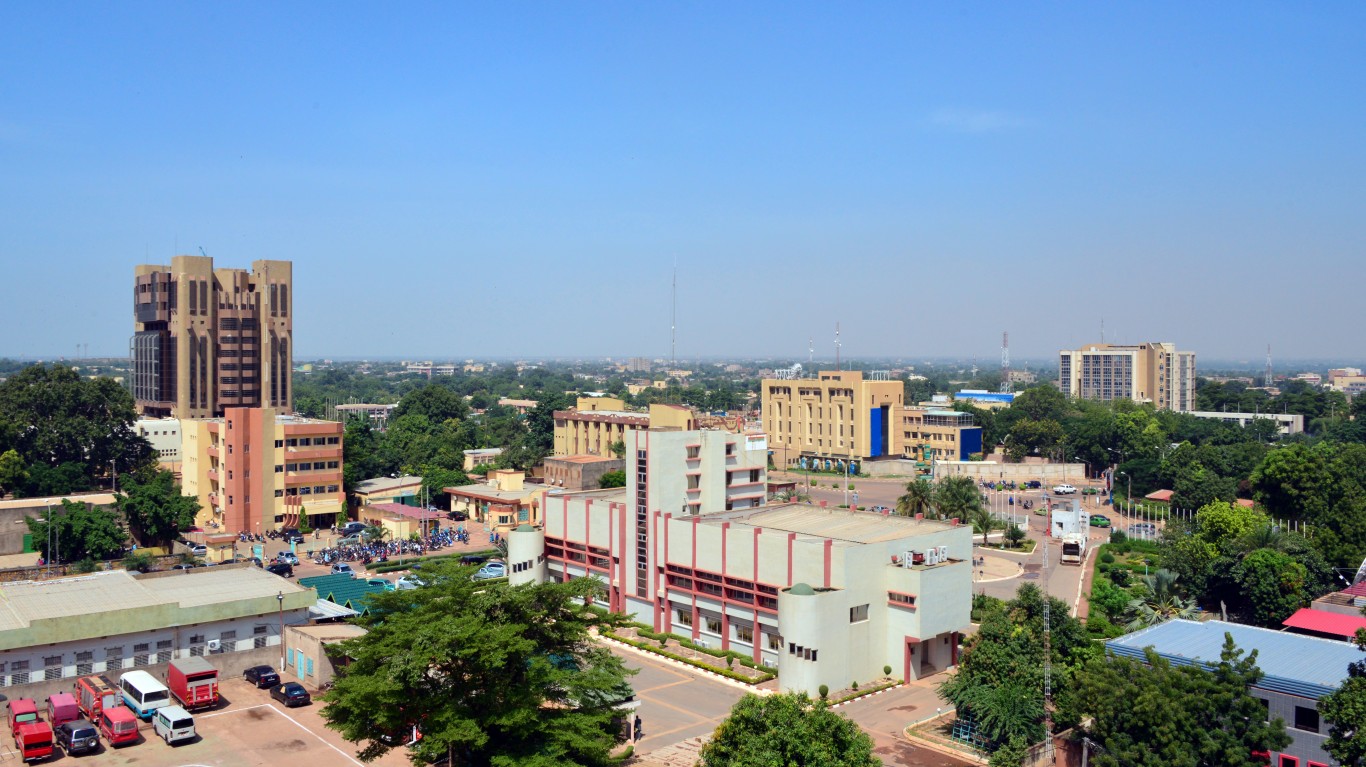
14. Burkina Faso
> GNI per capita: $1,705
> 2018 GDP: $14.4 billion (129th out of 208 countries)
> Population (2018): 19.8 million
> Life expectancy at birth in 2017: 60.8 years
Economic development in the West African nation of Burkina Faso has been hampered by political instability and violence. Though home to significant reserves of gold, the former French colony ranks among the poorest in the world. Its $14.4 billion economy is smaller than that of much less populous countries.
As is often the case in poor countries, Burkina Faso’s economy is heavily dependent on farming. The agriculture, fishing and forestry sector accounts for over a quarter of the country’s GDP.
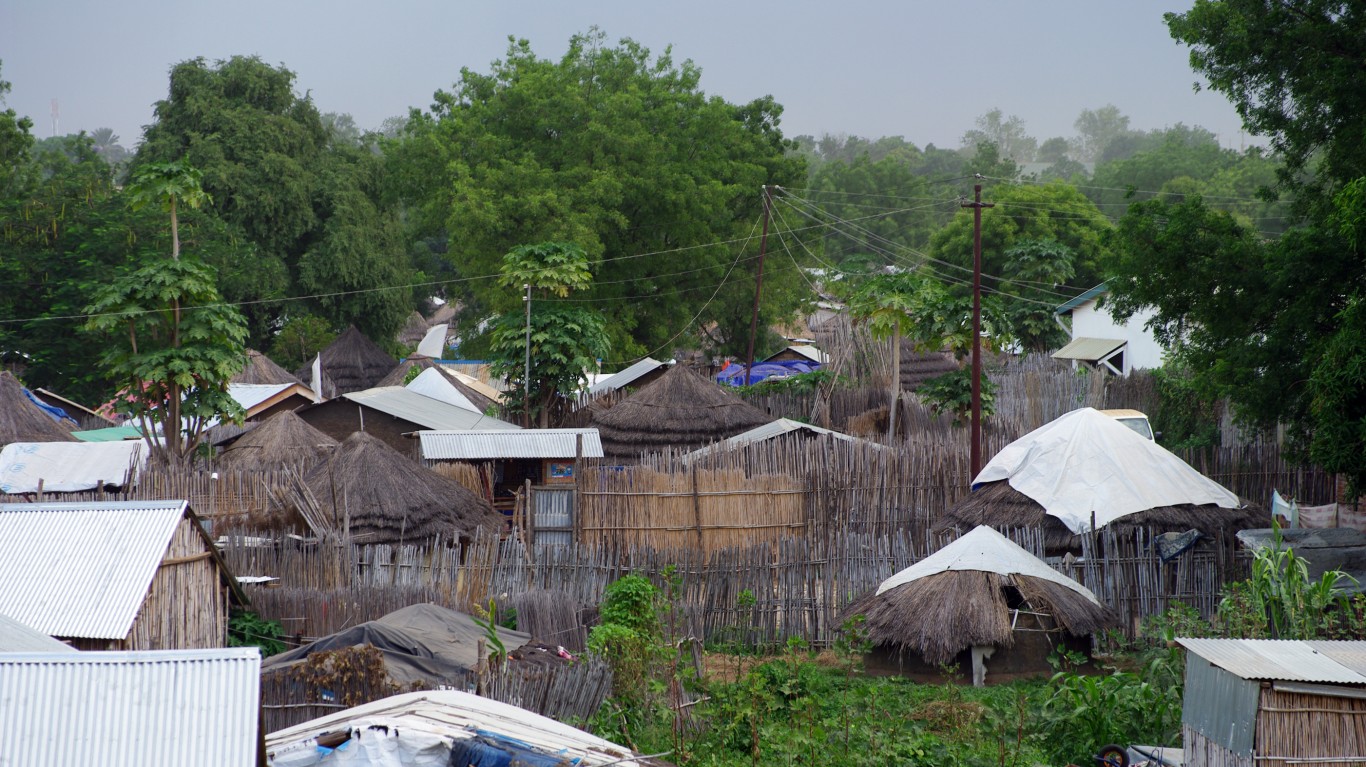
13. South Sudan
> GNI per capita: $1,686
> 2016 GDP: $3.1 billion (173rd out of 208 countries)
> Population (2018): 11.0 million
> Life expectancy at birth in 2017: 57.4 years
The youngest countries in the world, South Sudan has been an independent nation since July 2011, when it gained independence from Sudan. The country, which was formed as a result of what was Africa’s longest-running civil war, has been embroiled in a civil war of its own for most of its history — from 2013 to 2018.
Violence and government instability leave little room for economic development, and Sudan is one of the poorest countries in the world. The country’s GNI per capita is just $1,686.
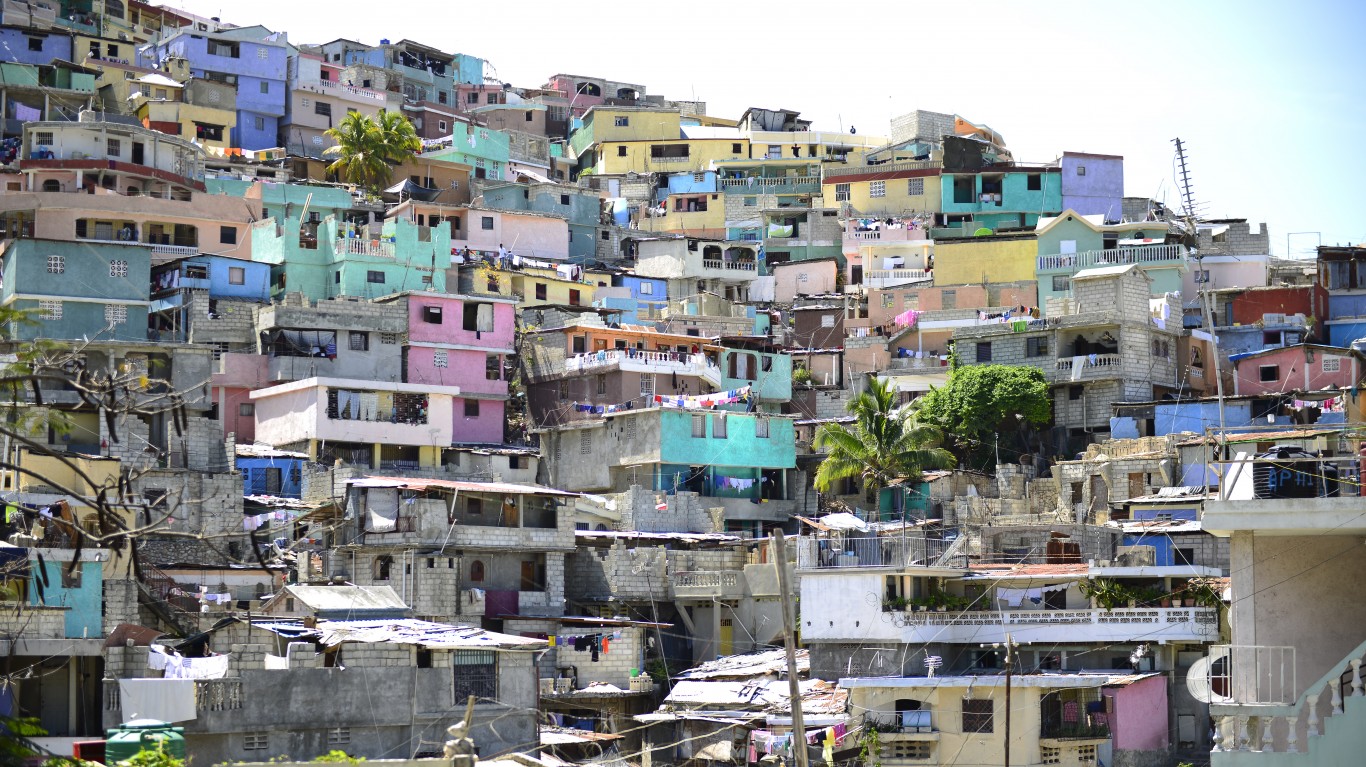
12. Haiti
> GNI per capita: $1,665
> 2018 GDP: $9.7 billion (144th out of 208 countries)
> Population (2018): 11.1 million
> Life expectancy at birth in 2017: 63.3 years
Located on the island of Hispaniola in the Carribbean, Haiti is one of the few places outside of Africa to rank among the poorest countries in the world. The country was hamstrung economically since gaining independence from France in the early 19th century, as it was forced to pay reparations to its former European master to compensate former slave owners. The debt was repaid in full by the mid-20th century, but there have been recent calls for France to return the money.
In recent years, economic development has been hindered by political instability and devastating natural disasters. Haiti’s $1,665 GNI per capita is the lowest in North America and 12th lowest in the world.
[in-text-ad-2]
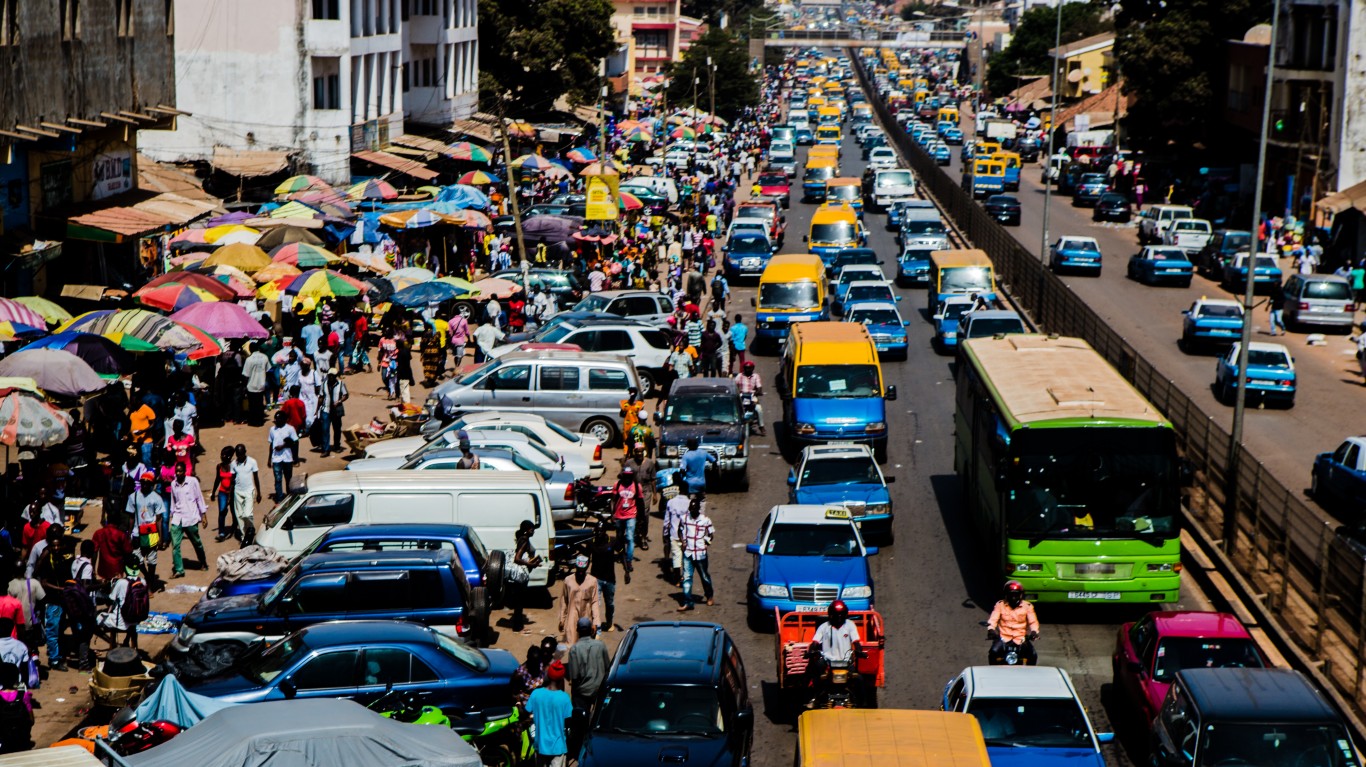
11. Guinea-Bissau
> GNI per capita: $1,593
> 2018 GDP: $1.5 billion (190th out of 208 countries)
> Population (2018): 1.9 million
> Life expectancy at birth in 2017: 57.7 years
Guinea-Bissau relies heavily on foreign aid and is saddled with massive debt. Agriculture accounts for nearly half of the country’s $1.5 billion economy, and nuts — mostly cashews — account for over 90% of the country’s total exports in 2017.
The West African country has one of the least healthy populations in the world. Life expectancy at birth in Guinea-Bissau is just 57.7 years, nearly 15 years below the global average.
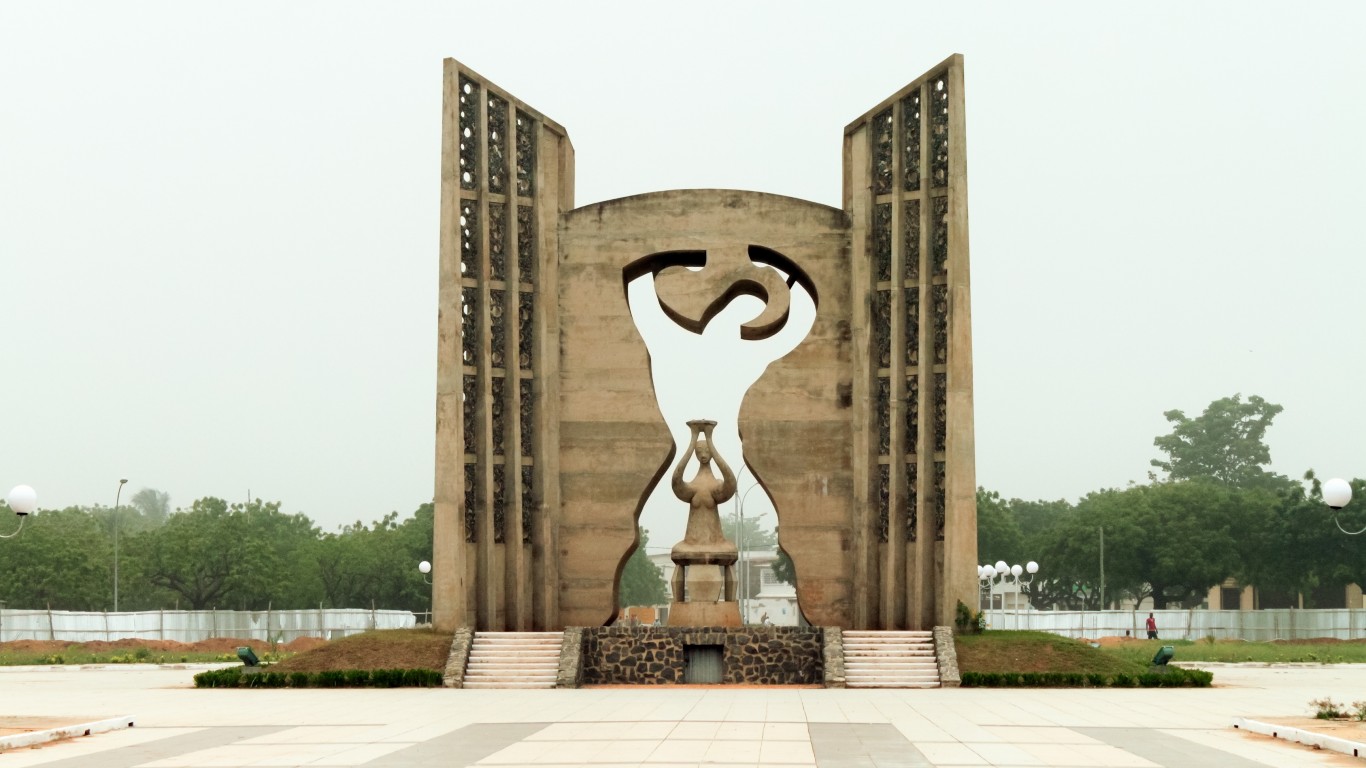
10. Togo
> GNI per capita: $1,593
> 2018 GDP: $5.3 billion (159th out of 208 countries)
> Population (2018): 7.9 million
> Life expectancy at birth in 2017: 60.5 years
Since gaining independence from France in 1960, the West African nation of Togo has struggled with economic development. Like most poor countries, Togo relies heavily on agriculture — both commercial and subsistence.
Though foreign investment in the country has slowed in recent years, Togo’s economy grew by 5.0% in 2017, driven by infrastructure investment and its mineral industry. Mineral products like petroleum and calcium phosphate accounted for over 40% of the country’s exports in 2017.
[in-text-ad]
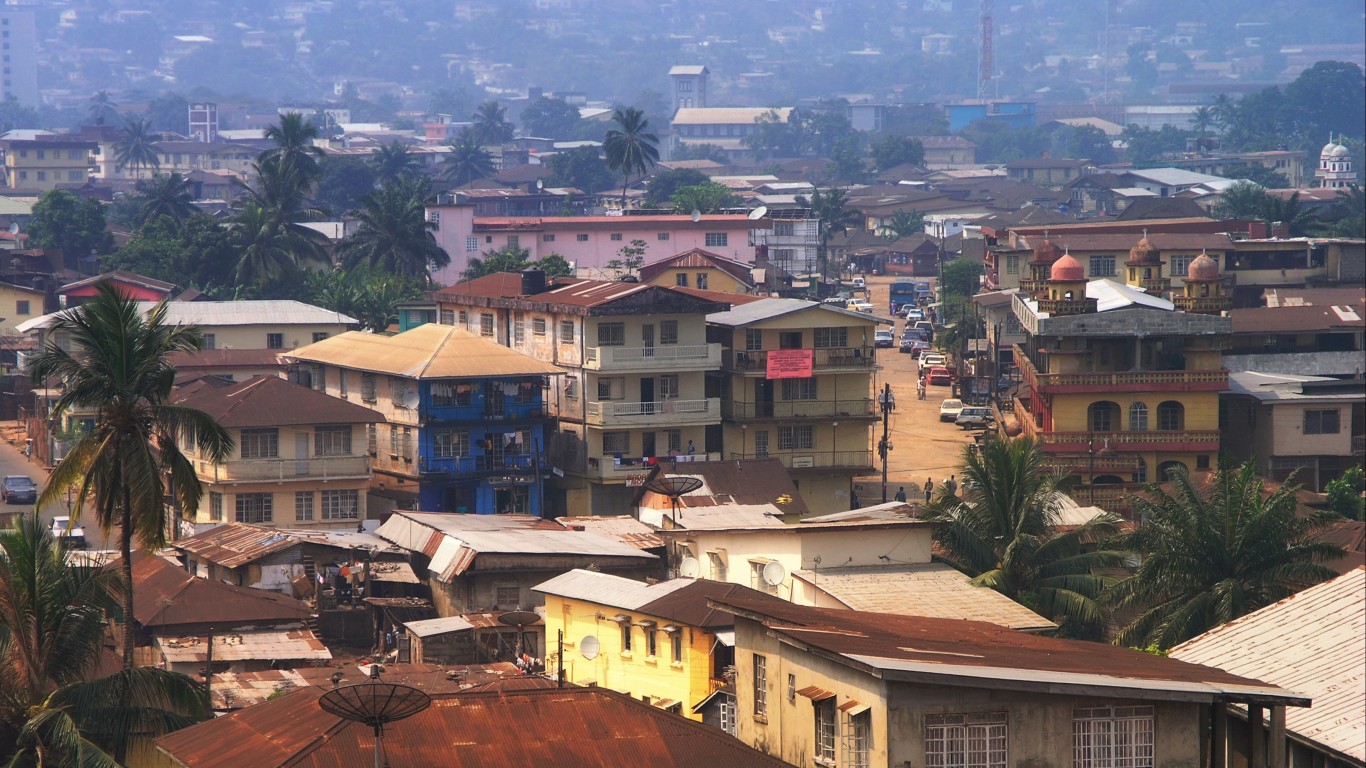
9. Sierra Leone
> GNI per capita: $1,360
> 2018 GDP: $4.0 billion (164th out of 208 countries)
> Population (2018): 7.7 million
> Life expectancy at birth in 2017: 53.9 years
Sierra Leone’s $4.0 billion economy is smaller than that of many other countries home to much smaller populations. As in other poor countries, Sierra Leone’s economy is heavily dependent on farming. Agriculture, forestry, and fishing accounts for over 60% of the country’s GDP, the largest share of any country in the world.
Outside of farming, the country, which is still recovering from a devastating civil war that ended in 2002, also relies on its mineral resources. Its chief exports are iron ore, titanium ore, and diamonds.
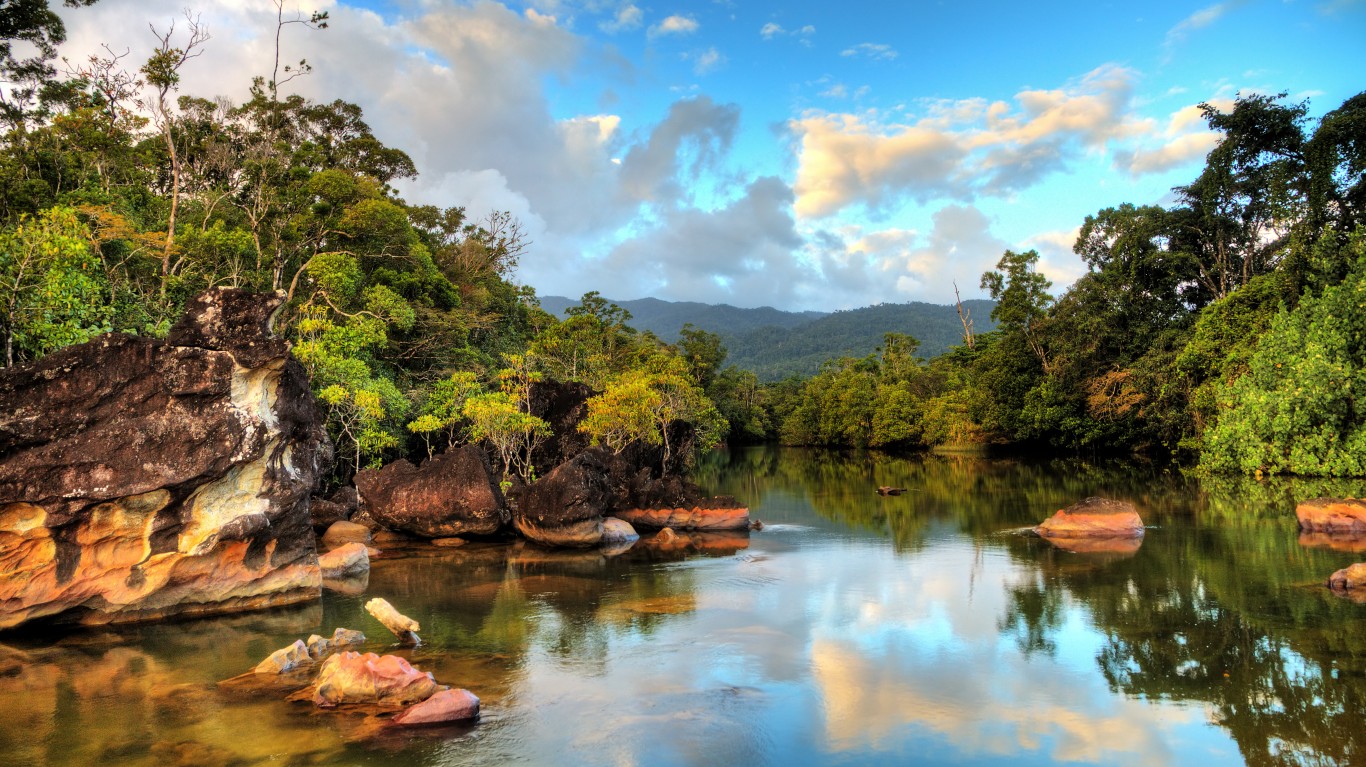
8. Madagascar
> GNI per capita: $1,339
> 2018 GDP: $12.1 billion (138th out of 208 countries)
> Population (2018): 26.3 million
> Life expectancy at birth in 2017: 66.3 years
Madagascar has a GNI per capita of just $1,339, less than 1/40th that of the United States. The island nation off the eastern coast of Africa has a population of 26 million. The country is largely agriculture based, with agriculture employing over 80% of the population. Madagascar has substantial natural resources, but these remain relatively untapped.
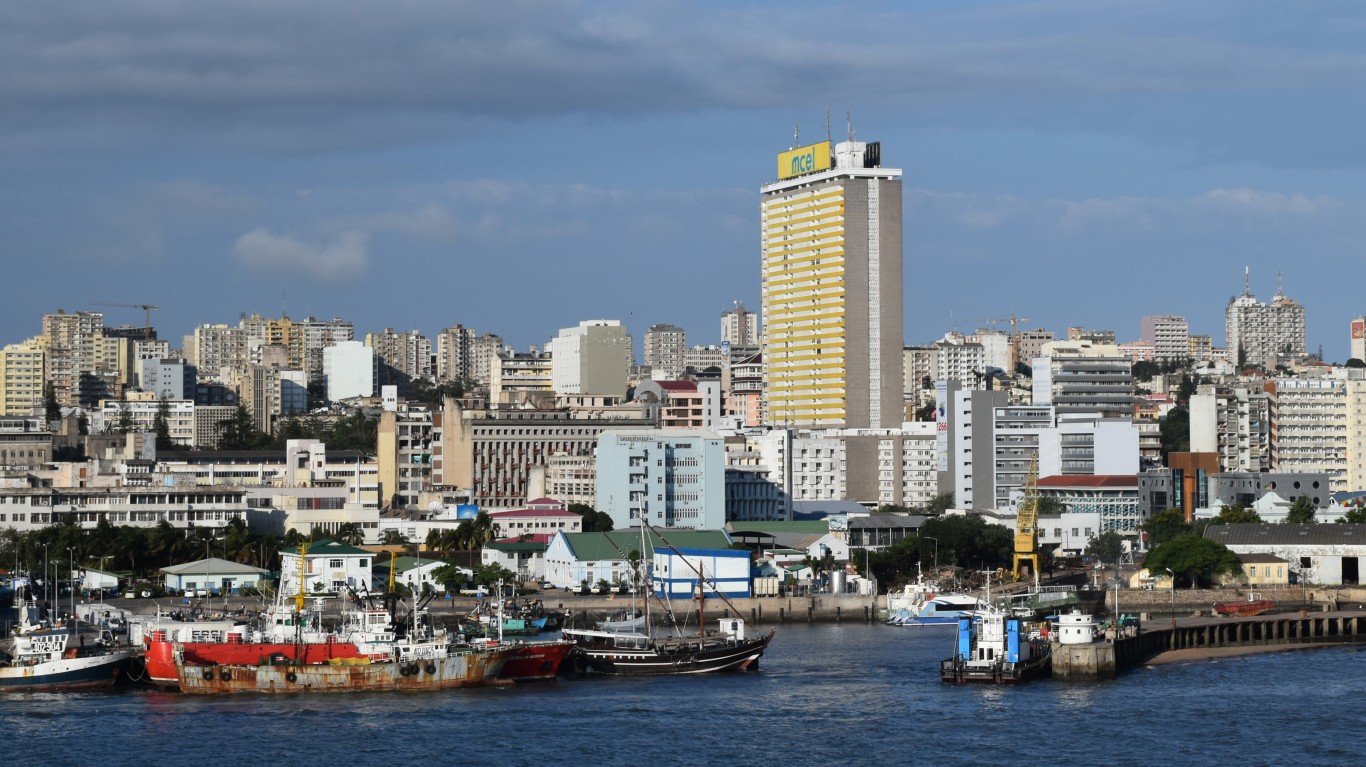
7. Mozambique
> GNI per capita: $1,154
> 2018 GDP: $14.5 billion (128th out of 208 countries)
> Population (2018): 29.5 million
> Life expectancy at birth in 2017: 59.3 years
In the years following 1975 — when Mozambique gained independence — development was hamstrung by economic mismanagement and a decade and a half long civil war. Though the 2011 discovery of gas fields along the country’s coast may soon usher in a new era of prosperity for Mozambique, it currently ranks among the poorest countries in the world.
GNI per capita in Mozambique is just $1,154. Around the world, people living in poverty tend to have far shorter life expectancies than average. Mozambique is one of just 14 countries where life expectancy at birth is less than 60 years.
[in-text-ad-2]

6. Malawi
> GNI per capita: $1,149
> 2018 GDP: $7.1 billion (150th out of 208 countries)
> Population (2018): 18.1 million
> Life expectancy at birth in 2017: 63.3 years
Malawi’s economy is heavily dependent on farming. Agriculture, forestry, and fishing accounts for over a quarter of the country’s GDP. Meanwhile, tobacco alone accounts for over 70% of the country’s exports. Economic development has been hampered in the East African country by government corruption and disease. Malawi has been among the countries hardest hit by HIV/AIDS, and more than a million children in the country are orphans due to the disease. The country’s GNI per capita of $1,149 is lower than that of all but five other countries in the world.
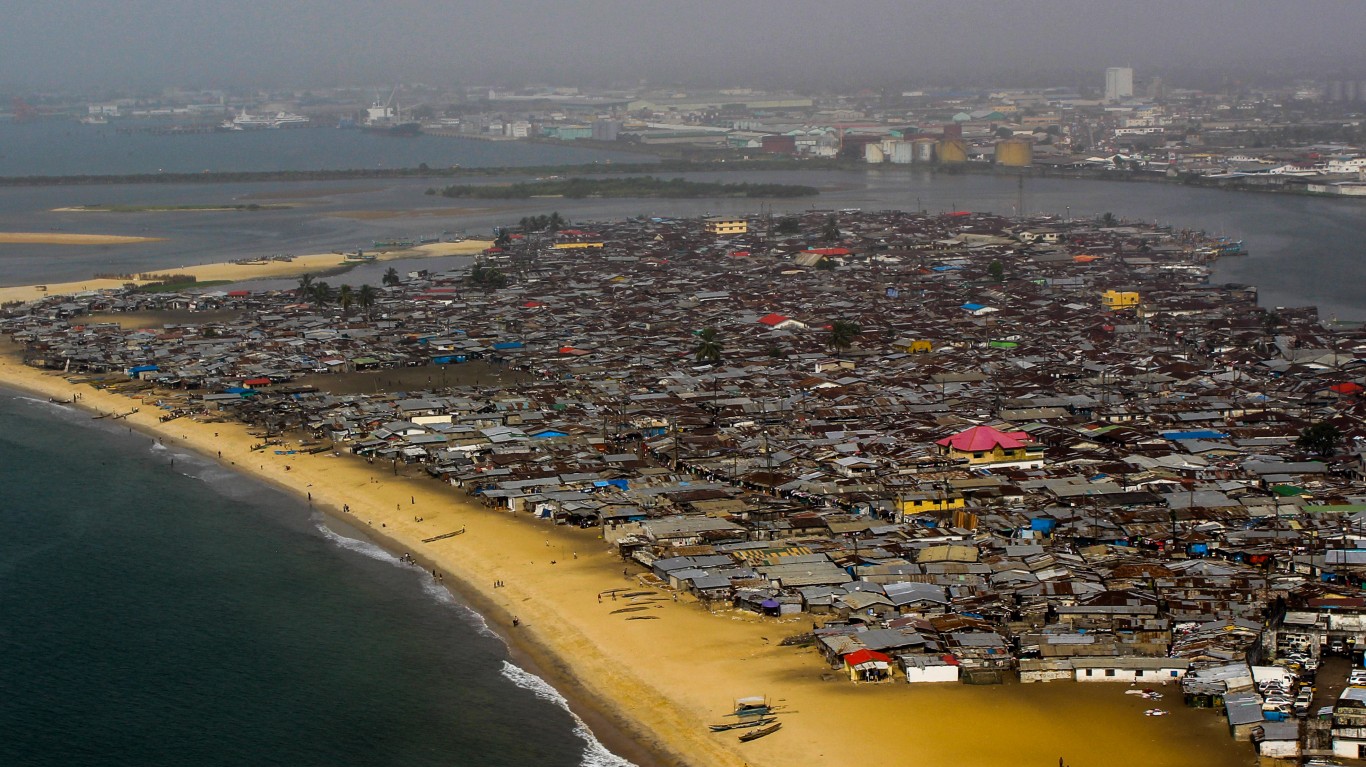
5. Liberia
> GNI per capita: $1,040
> 2018 GDP: $3.2 billion (169th out of 208 countries)
> Population (2018): 4.8 million
> Life expectancy at birth in 2017: 63.3 years
Liberia’s economy is heavily dependent on foreign aid and its abundant natural resources, which include valuable minerals, forests, and agricultural products. While natural resources have contributed to the current economic boon, control of the resources fueled a civil war in the 1990s and 2000s that destroyed much of the country’s economy and infrastructure. Today, Liberia’s GNI per capita of $1,040 is among the lowest in the world.
[in-text-ad]
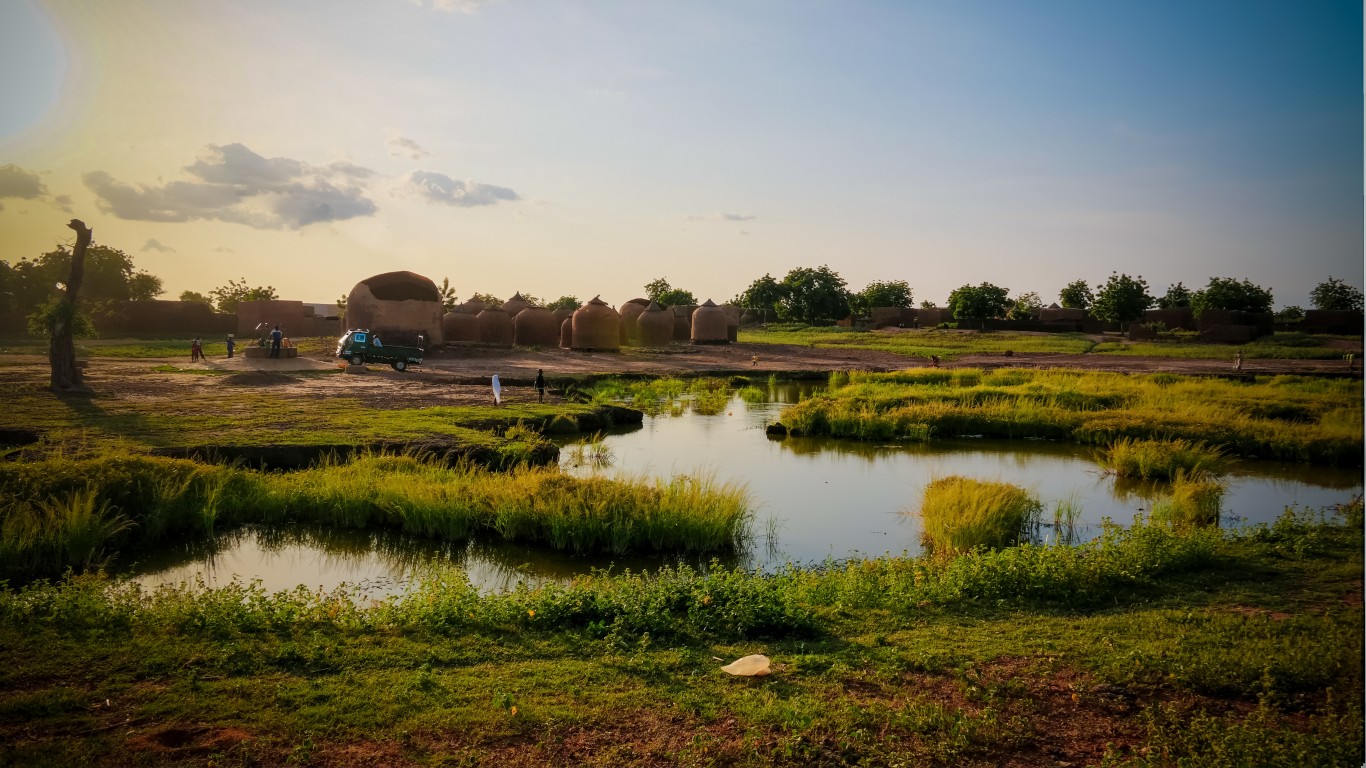
4. Niger
> GNI per capita: $901
> 2018 GDP: $9.2 billion (146th out of 208 countries)
> Population (2018): 22.4 million
> Life expectancy at birth in 2017: 61.6 years
The African nation of Niger is one of just a few countries in the world with a GNI per capita of less than $1,000. The United States has a population roughly 14 times that of Niger, but a GDP over 2,200 times larger. Niger’s life expectancy at birth is just 61.6 years, nearly 17 years below that of the United States. The country has been ranked by the UN as one of the least economically developed nations on Earth.

3. Democratic Republic of the Congo
> GNI per capita: $800
> 2018 GDP: $47.2 billion (90th out of 208 countries)
> Population (2018): 84.1 million
> Life expectancy at birth in 2017: 60.0 years
The Democratic Republic of the Congo is one of only four countries with a GNI per capita of less than $1,000. Corruption in the public sector can discourage investment and hinder economic progress, and according to Transparency International, a nonprofit corruption watchdog, the DR Congo is one of the most corrupt countries in the world.
It has also been at the center of a war that has resulted in the deaths of over 6 million people. The fighting has been fueled by attempts to control the country’s considerable mineral wealth, which includes diamonds, gold, uranium, and copper.
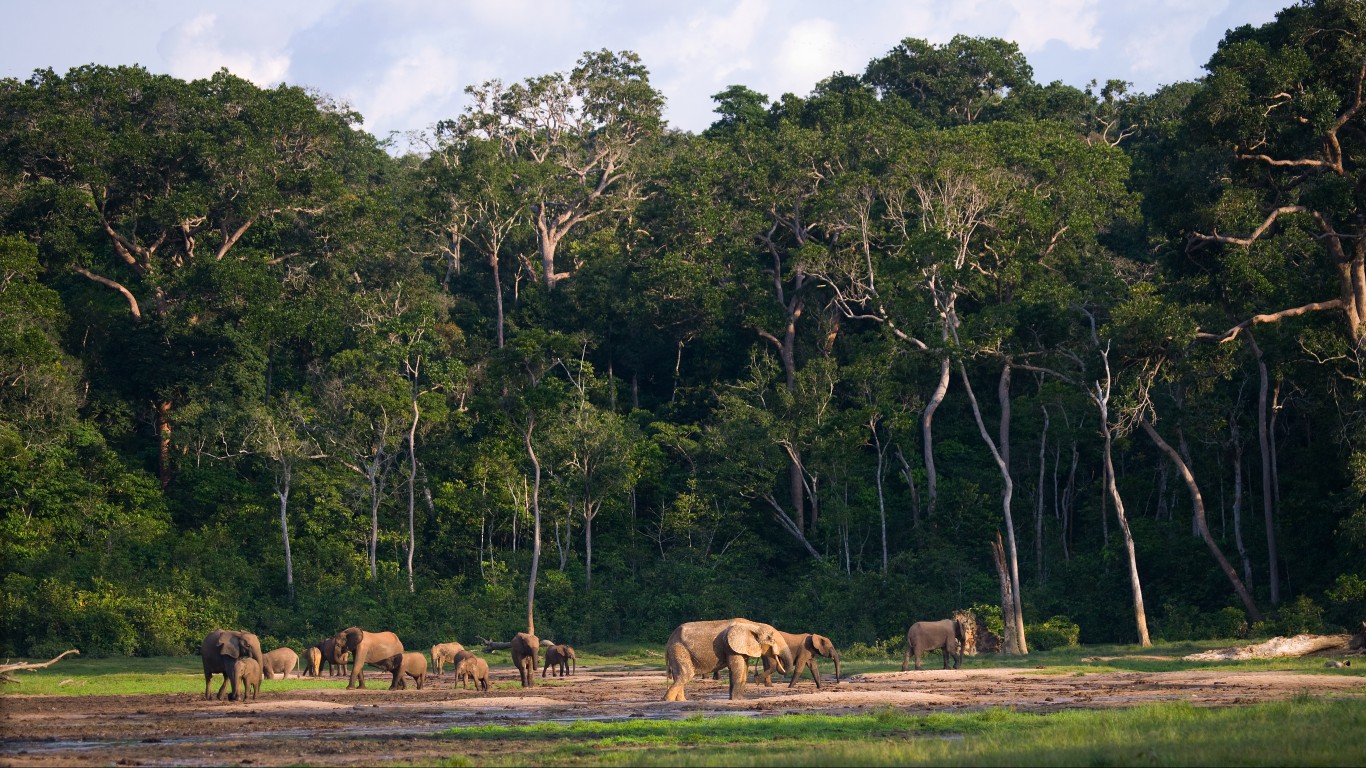
2. Central African Republic
> GNI per capita: $756
> 2018 GDP: $2.4 billion (180th out of 208 countries)
> Population (2018): 4.7 million
> Life expectancy at birth in 2017: 52.2 years
Like many of the poorest countries in the world, the Central African Republic’s economy is primarily driven by agriculture. Though the nation has some valuable natural resources, including diamonds, gold, and uranium, it remains highly underdeveloped, thanks in large part to ongoing political instability and a number of violent conflicts in the region over the decades. The Central African Republic has the shortest-lived population on Earth, with a life expectancy at birth of just 52.2 years.
[in-text-ad-2]

1. Burundi
> GNI per capita: $689
> 2018 GDP: $3.1 billion (172nd out of 208 countries)
> Population (2018): 11.2 million
> Life expectancy at birth in 2017: 60.9 years
Burundi is the poorest country in the world, as measured by gross national income per capita. Burundiy’s GNI per capita was just $689 as of 2018, or less than 1/80th the U.S. GNI per capita. Like many of the poorest nations in the world, farming is far and away the largest industry, accounting for over 90% of employment. The nation is heavily reliant on foreign aid, and it has a poverty rate of nearly 75%.
Retirement can be daunting, but it doesn’t need to be.
Imagine having an expert in your corner to help you with your financial goals. Someone to help you determine if you’re ahead, behind, or right on track. With SmartAsset, that’s not just a dream—it’s reality. This free tool connects you with pre-screened financial advisors who work in your best interests. It’s quick, it’s easy, so take the leap today and start planning smarter!
Don’t waste another minute; get started right here and help your retirement dreams become a retirement reality.
Thank you for reading! Have some feedback for us?
Contact the 24/7 Wall St. editorial team.